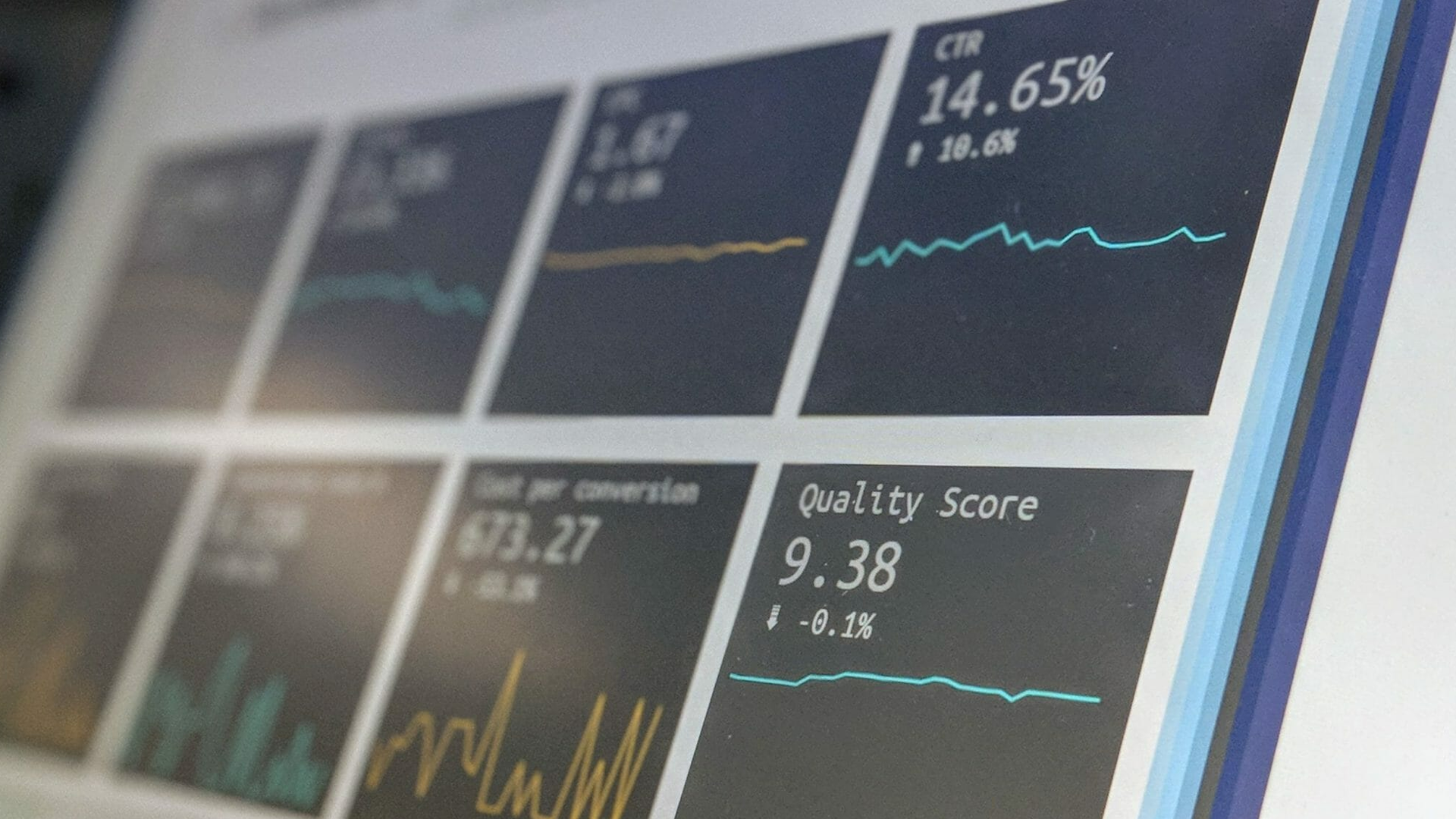Introduction
A sales page serves as the primary conversion destination where affiliate-driven traffic lands to make purchases. Affiliate marketing requires well-designed landing pages tailored to different traffic sources, with strategic elements like compelling headlines, visuals, and clear calls-to-action.
Unlike standard sales pages, this specialized landing page must simultaneously satisfy two distinct audiences: the affiliate marketers promoting your product and the potential customers they direct to your offer. Your affiliate marketing landing page becomes the critical junction where affiliate marketing campaigns either succeed or fail, directly impacting both your revenue and your ability to recruit affiliates.
A well-optimized sales page proves crucial for attracting quality affiliate partners who evaluate conversion potential before committing their promotional efforts. As consistently proven by traffic on Digistore24, high converting affiliate landing pages not only generate more sales but also create a positive feedback loop that encourages existing affiliates to promote more aggressively while making it easier to recruit new affiliates to your affiliate program.
This comprehensive guide covers everything from initial research and planning through post-launch optimization, providing a step by step guide for designing, building, and optimizing sales pages specifically for affiliate marketing success.
Understanding the Role of Your Sales Page in Affiliate Marketing

Your sales page serves as the final conversion point in the affiliate marketing funnel, where months of relationship building and traffic generation by affiliate marketers culminates in either a purchase or abandonment. The landing or bridge page plays a crucial role in guiding visitors to the sales page, which is essential for earning commissions and increasing sales.
A well-crafted bridge or landing page pre-sells and warms up the audience before they reach the sales page, thereby increasing the likelihood of a conversion and boosting sales. This positioning makes your affiliate landing page fundamentally different from direct-response pages designed for Google Ads or organic traffic, as it must account for the pre-existing relationship between the affiliate and their audience.
Successful affiliates evaluate multiple factors before deciding to promote products through your affiliate program. They analyze conversion rates from previous promotional efforts, examine the quality of your landing page copy, and assess whether your value proposition aligns with their audience’s needs.
There's a Science to the Perfect Sales Page
Unlike direct-response pages, optimized affiliate pages can help attract organic traffic from search engines, providing long-term value for both affiliates and vendors. A poorly designed affiliate marketing landing page can cause high-quality affiliate partners to decline promotion opportunities, regardless of your commission structure or product quality.
Key metrics matter to both vendors and affiliate marketers when evaluating page performance. Conversion rates directly impact affiliate earnings and motivation to continue promotional activities. Average order value affects overall campaign profitability for both parties.
Refund rates influence long-term relationship sustainability, while customer lifetime value determines the true success of your affiliate marketing strategy. Your affiliate marketing landing page must optimize for these interconnected metrics rather than focusing solely on immediate conversions.
Types of Landing Pages for Affiliate Marketing

Affiliate marketing leverages a variety of landing pages, each tailored to specific campaign goals and audience behaviors. Understanding the different types of landing pages is essential for affiliate marketers and vendors aiming to maximize conversion rates and support diverse affiliate marketing strategies.
Effective landing pages are designed to address the visitor's pain points, which is crucial for increasing engagement and conversions. Here are the most common types of landing pages used in affiliate marketing:
- Squeeze Pages: These landing pages are designed to capture visitor information, typically email addresses, in exchange for a valuable resource such as an eBook, checklist, or webinar access. Squeeze pages are highly focused, with minimal distractions, making them ideal for building email lists that can be nurtured for future affiliate marketing campaigns.
- Sales Pages: The classic sales page is built to convert visitors into buyers by presenting a compelling offer, highlighting major selling points, and guiding users toward a purchase. High converting affiliate landing pages in this category use persuasive copy, strong calls-to-action, and social proof to drive immediate sales.
- Bridge Pages: Bridge pages act as a warm-up step between the initial traffic source and the main sales page. They provide valuable content, reviews, or personal stories that build trust and anticipation, making visitors more receptive to the final offer. Bridge pages are especially effective in affiliate marketing for pre-selling and increasing conversion rates.
- Review Pages: These landing pages offer in-depth reviews or comparisons of products and services, helping potential customers make informed decisions. Review pages often include pros and cons, user testimonials, and direct affiliate links, making them a trusted resource for site visitors.
- Webinar Pages: Used to promote live or recorded webinars, these landing pages encourage visitors to register for an educational or promotional event. Webinar pages are effective for high-ticket affiliate offers, as they allow for deeper engagement and relationship-building before presenting the sales pitch.
- Thank You Pages: After a visitor completes a desired action—such as signing up for a newsletter or downloading a resource—a thank you page acknowledges their action and can offer additional value, such as exclusive discounts or related product recommendations. This keeps potential customers engaged and can increase the effectiveness of your affiliate marketing funnel.
Research and Planning Your Affiliate-Friendly Sales Page
Understanding your target audience requires analyzing the demographics and psychographics that affiliate marketers typically reach through their diverse promotional channels. Social media influencers on Instagram reach different audience segments than email marketers or YouTube reviewers, yet your affiliate landing page must convert effectively across all these traffic sources.
Defining specific target audiences is crucial, as it allows you to tailor landing pages and marketing strategies for increased engagement and conversions. This cross-channel compatibility demands broader appeal while maintaining message consistency. Remember, social exposure and social proof are vital for success!
Developing a compelling value proposition that affiliate marketers can easily communicate becomes essential for affiliate success. Your core message must translate effectively across different formats: a 30-second YouTube mention, an Instagram story slide, an email recommendation, or a detailed blog review. Simple, clear benefits resonate better than complex feature lists when affiliate partners need to quickly communicate your offer’s value to their audiences.
What to Keep An Eye On

Identifying your unique selling points and competitive advantages helps differentiate your offer from competitors that affiliate marketers might also promote. Many successful affiliate landing pages emphasize elements like “30-Day Money-Back Guarantee,” “Instant Digital Delivery,” or “24/7 Customer Support” because these differentiators address common purchase hesitations and address the visitor's pain points, providing affiliates with concrete promotional talking points.
Planning your sales page structure and flow requires considering both warm affiliate traffic (from trusted recommenders) and cold prospects (from broader promotional campaigns). Warm traffic may need less convincing but still requires clear action steps, while cold traffic demands more extensive social proof and objection handling.
Your page architecture should accommodate both scenarios without creating friction for either segment. Additionally, structure your page to effectively attract and onboard prospective affiliates, ensuring a smooth process for new partners joining your program.
Essential Elements of a High-Converting Affiliate Landing Page
Well-designed affiliate pages improve user experience and boost conversions by guiding visitors through a focused, visually appealing journey. Crafting attention-grabbing headlines and subheadlines that work well in affiliate promotional content requires understanding how affiliate marketers frame their recommendations.
Your headline should reinforce the problem-solution narrative that brought visitors to your page rather than introducing entirely new concepts. Subheadlines provide opportunities to elaborate on benefits while maintaining the emotional momentum created by the affiliate’s promotion. There is a clear distinction between dedicated affiliate landing pages and general web pages, as dedicated landing pages are specifically optimized to drive targeted actions.
Writing benefit-focused product descriptions addresses specific pain points that affiliate marketers commonly highlight in their promotions. Rather than listing features, successful affiliate landing pages emphasize transformational outcomes: “Stop struggling with complicated software” instead of “Features 47 different tools.”
This approach aligns with how affiliate partners naturally discuss products when recommending solutions to their audiences. Using a dedicated landing page helps focus user attention and drive specific actions, such as sharing reviews or making purchases, by eliminating distractions.
Designing prominent call-to-action buttons with urgency-driven copy like “Get Instant Access” or “Start Your Transformation Today” provides clear direction for site visitors ready to purchase. A well-designed landing page encourages visitors to take action through compelling headlines, persuasive content, and clear CTAs.
Features of High-Converting Landing Pages

High converting landing pages typically feature multiple CTA placements throughout the content, recognizing that different visitors reach purchase readiness at different points in their page experience.
Creating engaging and visually appealing content is key to encouraging visitors to convert. The 1:1 ratio principle—one page, one conversion goal—proves particularly important for affiliate traffic where confusion leads to immediate abandonment. Avoiding too many navigation links on your landing page reduces distractions and increases conversions.
Including high-quality product images, demonstration videos, and before/after photos gives affiliate marketers visual content they can reference in their promotions. These assets serve dual purposes: converting visitors on your sales page while providing social media content that affiliates can share with proper attribution.
Professional visuals signal product quality and vendor credibility, factors that matter significantly to potential affiliates evaluating your affiliate program. The characteristics of an effective landing include strong design, seamless functionality, and proven optimization techniques.
You have taken the time and care to create and refine your product; it should get recognition! Adding trust signals including customer testimonials, money-back guarantees, security badges, and media mentions reduces purchase hesitation for visitors who lack direct familiarity with your brand.
Video testimonials prove particularly effective for affiliate marketing landing pages because they provide authentic social proof that affiliate partners can reference when discussing your product’s effectiveness with their audiences. Optimizing these elements can significantly improve your conversion rate.
Understanding Affiliate Programs and Landing Pages
Affiliate programs are a cornerstone of modern online marketing, enabling businesses to expand their reach by partnering with affiliate marketers who promote products or services in exchange for a commission.
At the heart of every successful affiliate program is a high converting affiliate landing page. This dedicated landing page is specifically designed to attract potential affiliates and convert them into active partners.
An effective affiliate landing page serves as the first impression for prospective affiliates, so it must be clear, engaging, and persuasive. The best affiliate landing pages feature a compelling headline that immediately communicates the value of joining your affiliate program, supported by appealing visuals that reinforce your brand’s credibility.
Concise, benefit-driven copy explains the advantages of becoming an affiliate, while clear calls-to-action (CTAs) guide visitors toward signing up or learning more.
Social proof, such as testimonials from successful affiliates or statistics highlighting program achievements, further boosts trust and encourages visitors to take action. A well designed landing page not only informs but also inspires confidence, making it easier for potential affiliates to envision their own success within your program.
By focusing on these elements, you can create high converting affiliate landing pages that drive growth for your affiliate program and help build a network of motivated, successful affiliates.
Technical Setup and Affiliate Tracking Integration

Ensuring mobile-responsive design becomes critical since over 60% of affiliate traffic originates from mobile devices through social media platforms like Instagram, TikTok, and Facebook. Your affiliate marketing landing page must load quickly and function flawlessly across all screen sizes, as affiliate marketers often lose promotional momentum when their recommended links lead to poor mobile experiences.
Implementing robust affiliate tracking systems through platforms like Post Affiliate Pro, ReferralCandy, or established affiliate networks ensures accurate commission attribution. Affiliate platforms also provide users with access to promotional tools and facilitate communication between vendors and affiliates, making it easier to manage relationships and maximize benefits for all parties.
Proper cookie duration settings provide affiliates with reasonable attribution windows while protecting your interests. Your affiliate software should handle complex scenarios like multiple touchpoints and cross-device conversions that commonly occur in modern affiliate marketing campaigns.
Don't Forget the Tech
Setting up UTM parameters and Google Analytics goals enables detailed tracking of affiliate performance across different traffic sources. This data helps you identify which affiliate partners drive the highest quality traffic, allowing you to optimize support and incentives accordingly. Google Search Console integration provides additional insights into organic traffic patterns that may result from affiliate SEO efforts.
Ensuring compliance with FTC disclosure requirements, GDPR privacy regulations, and affiliate network policies protects your long-term business sustainability. While affiliates handle most disclosure requirements on their promotional content, your sales page should avoid misleading claims that could create liability issues. Clear privacy policies and terms of service demonstrate professionalism that attracts quality affiliate partners.
To create a new page for your affiliate program or landing page within a WordPress website, simply use the WordPress dashboard and page builder tools to set up and launch your content efficiently.
Creating Marketing Assets to Support Your Affiliates

Designing professional banner ads in standard sizes (728x90, 300x250, 160x600) provides affiliate marketers with ready-to-use promotional materials for blog and website placement. Well-designed banners should highlight major selling points while maintaining visual consistency with your main sales page. Providing multiple creative options allows affiliates to test different approaches and select banners that resonate best with their specific audiences.
Writing email templates and social media copy that affiliate partners can customize enables consistent messaging while allowing personalization for different audience segments. Effective templates include compelling subject lines, benefit-focused body content, and clear calls to action with properly formatted affiliate links.
Social media copy should adapt to platform-specific requirements: Twitter character limits, Instagram hashtag strategies, and LinkedIn professional tone considerations. Additionally, creating dedicated landing pages specifically designed to attract and recruit potential affiliate partners can help showcase program benefits and streamline the sign-up process.
Helping Helps You
Providing clear brand guidelines including logo usage, color schemes, and messaging dos and don’ts ensures consistent representation across all affiliate promotional activities. These guidelines should specify approved claims, prohibited statements, and preferred terminology. Along with brand guidelines, offer affiliate tools such as relevant images and visual assets to enhance credibility and help affiliates effectively convey your product’s message.
Clear branding standards help maintain product positioning while giving affiliate marketers confidence in their promotional compliance.
Creating urgency elements like limited-time bonuses, countdown timers, or exclusive affiliate-only offers provides promotional advantages that help affiliate partners differentiate their recommendations from general marketing efforts. These elements work particularly well for affiliate marketing because they reward the audience’s trust in their recommended source while creating legitimate reasons for immediate action.
Working with an Affiliate Partner

Building a successful affiliate marketing campaign relies on recruiting the right affiliate partners and providing them with the resources they need to thrive. Affiliate partners can be discovered through a variety of channels, including social media platforms, established affiliate networks, and targeted content marketing efforts. When recruiting affiliates, it’s important to highlight the unique benefits of your affiliate programs and demonstrate the support affiliates will receive.
Once you’ve connected with an affiliate partner, set them up for success by offering a comprehensive suite of marketing materials — such as banners, email swipes, product information, and promotional graphics.
Access to reliable affiliate software and robust tracking systems ensures that affiliates can monitor their performance and receive accurate, timely commissions. Successful affiliate programs also prioritize regular communication, providing updates, tips, and encouragement to keep affiliates engaged and motivated.
Competitive commission structures and prompt payments are essential for maintaining strong relationships with your affiliate partners. By investing in the tools, support, and incentives that affiliates need, you’ll foster a network of successful affiliates who are eager to promote your products and contribute to the ongoing success of your affiliate marketing campaigns.
Recruiting Affiliates to Promote Your Sales Page
Building a successful affiliate program starts with recruiting affiliates who are motivated to promote your sales page and drive quality traffic. To attract the right affiliate partners, it’s essential to create a compelling affiliate program that clearly outlines commission rates, cookie durations, and the marketing materials available to support affiliates.
Joining established affiliate networks — or platforms like Digistore24 — can expand your reach by connecting your offer with a large pool of potential affiliates actively seeking new products to promote. These platforms streamline the process of recruiting affiliates and provide built-in tracking and payment solutions, making it easier to manage your affiliate marketing program.
Providing affiliates with high-quality content and resources—such as banners, email templates, product information, and social media graphics—makes it easier for them to promote your sales page effectively. The more support and tools you offer, the more likely potential affiliates are to choose your program over competing offers.
Pre-Launch Testing and Quality Assurance

Testing the complete customer journey from affiliate link click through purchase confirmation and thank you page ensures seamless user experience across all conversion touchpoints. This testing should include different device types, browsers, and payment methods to identify potential friction points that could hurt affiliate conversion rates. Each step should load quickly and provide clear progress indicators to maintain visitor engagement.
Verifying affiliate tracking accuracy through test purchases using different affiliate links confirms proper commission attribution before launching promotional campaigns. Create test affiliate accounts and process sample transactions to ensure your affiliate software correctly tracks conversions, applies appropriate commission rates, and provides accurate reporting.
Address any tracking discrepancies before affiliates begin promotional activities. Gathering input from affiliate marketers during this process can help identify areas for improvement and ensure the system meets their needs.
More Tests!
Conducting usability testing with real users helps identify friction points in the checkout process that could damage affiliate conversion rates. Focus on areas where visitors commonly abandon the purchase process: form complexity, payment security concerns, unexpected costs, or unclear next steps.
Simple landing page designs typically outperform complex layouts for affiliate traffic because visitors arrive with specific expectations based on affiliate recommendations. A successful affiliate landing page appeals to the target audience, boosts conversions, and leverages design and messaging tailored for high performance.
Reviewing page load speeds using GTmetrix or PageSpeed Insights ensures fast loading times across all devices and connection types. Affiliate marketers often evaluate page performance before committing to promotional campaigns, as slow-loading pages directly impact their conversion rates and audience satisfaction.
Optimize images, minimize code, and leverage content delivery networks to achieve loading times under three seconds.
Using Google Ads to Drive Traffic to Your Affiliate Sales Page

Leveraging Google Ads is a powerful way to attract targeted visitors to your affiliate sales page and boost your affiliate marketing campaigns. To maximize your results, start with comprehensive keyword research to identify the search terms your target audience is using. Focus on keywords with high buyer intent that align with your product and affiliate marketing goals.
Craft compelling ad copy that incorporates your target keywords and clearly communicates the value proposition of your offer. Your ads should set accurate expectations and direct users to a relevant, high converting landing page that matches the ad’s promise. A well designed landing page with a clear and concise headline, persuasive copy, and a strong call-to-action will encourage visitors to take the next step.
Effective budget management is crucial for successful affiliate marketing with Google Ads. Set daily or campaign budgets that align with your goals, and use bid strategies that optimize for conversions or Return on Ad Spend (ROAS). Continuously monitor your campaign performance using Google Ads’ tracking features and Google Analytics to measure key metrics such as click-through rates, conversion rates, and cost per acquisition.
Regularly optimize your campaigns by testing different ad variations, refining your keyword list, and improving your landing page design based on performance data. By combining targeted Google Ads campaigns with high converting affiliate landing pages, you can drive qualified traffic, increase conversions, and scale your affiliate marketing efforts effectively.
Affiliate Marketing Landing Pages and SEO
Optimizing your affiliate marketing landing page for search engines is essential for attracting organic traffic and maximizing conversions. A well-optimized affiliate marketing landing page not only appeals to visitors but also ranks higher in search results, increasing visibility among your target audience. Start by incorporating relevant keywords — such as “affiliate landing page,” “affiliate marketing landing page,” and “affiliate marketing campaign” — naturally throughout your landing page content, headlines, and meta descriptions.
Ensure your landing page is mobile-friendly and loads quickly, as these factors directly impact both user experience and search engine rankings. High-quality content, including detailed product information, video testimonials, and authentic social proof, enhances credibility and encourages visitors to take action.
These elements also signal value to search engines, further improving your page’s ranking.
In addition to organic SEO efforts, leveraging Google Ads and other paid advertising channels can drive targeted traffic to your affiliate marketing landing pages, boosting conversion rates and overall affiliate success.
By combining strong SEO practices with compelling content and strategic advertising, you can attract organic traffic, increase your affiliate program’s reach, and achieve higher conversion rates for your affiliate marketing campaigns.
Post-Launch Monitoring and Continuous Optimization

Tracking affiliate-specific metrics including traffic quality, conversion rates, and revenue per visitor provides insights for ongoing optimization efforts. Your affiliate dashboard should segment performance by traffic source, allowing you to identify which promotional methods generate the highest-value customers.
This data enables targeted support for top-performing affiliate partners while identifying improvement opportunities for underperforming campaigns.
Gathering feedback from successful affiliate marketers about page elements that help or hinder their promotional efforts provides valuable optimization direction. This feedback is essential for creating a more effective affiliate landing page that attracts, informs, and converts potential affiliates by highlighting key benefits, earning opportunities, and testimonials with clear calls-to-action and a strategic layout.
Top affiliates understand their audiences well and can identify messaging or design elements that create friction for their specific traffic sources. Regular communication with affiliate partners creates collaborative relationships that benefit both parties.
Running A/B tests on headlines, pricing displays, and call-to-action buttons helps improve conversion rates specifically for affiliate traffic. Test elements that affiliate marketers commonly reference in their promotions: headline promises, guarantee terms, and pricing structures. Focus on statistical significance over quick results, as affiliate traffic patterns may vary significantly from other traffic sources.


